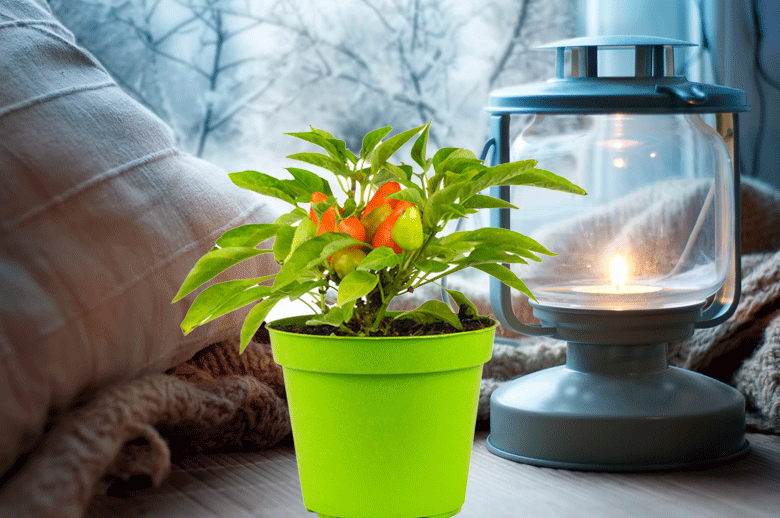
The first frost
The first frost has arrived in the West Midlands. With the anticipation that it would arrive around about now, three weeks ago I brought most of my Chillies in doors. Most are in my garage under grow lights as many still must ripen fully. I also prepared a couple of my larger plants for overwintering and even turned one of my larger plants (a Fatalii) into a Bonchi. Bonchi’s are Chilli plants that have been cut in such a way that they will eventfully resemble Bonsai trees. They make great indoor ornamental plants
great indoor ornamental plants
Overwintering Chillies is done by removing most of their foliage and pruning their stems so that the plant is placed in a position that it requires very little nutrition to grow. It means that when the plant goes into dormancy for the winter it can stay sufficiently alive to survive the winter. When spring arrives, the plant will then break out of dormancy and have a head start in in producing Chillies in the next season.
In their natural environment (hotter climates) Chillies are perennials. Perennials are plants that do not completely die off during winter in the same way annuals do. They lose foliage and stop growing during winter but will spring back into life at the onset of summer. In the UK, however, because of the cold winters, this is not possible. Chillies cannot survive freezing and die if exposed to the zero-degree temperatures that are often experienced in the United Kingdom during this time of the year.
Winter is here

Which plants and how ?
Choosing which plants to overwinter is the first consideration in the process. This year I chose plants that were too large to be brought indoors. For example, one of the plants I am overwintering this year is a Rocoto. Rocotos can grow into exceptionally large plants and there was just no way I could consider bring it in indoors were it not prepared for overwintering
While this was my main consideration for choosing to overwinter this specific plant, I normally consider other factors including how prolific a producer a plant has been during the season, how healthy the plant is or simply for no other reason that the plant has become a favourite. It is amazing how you can latch onto individual plants.
The first step in preparing a plant for overwintering, remove all remaining Chillies from the plant. Next, using the secateurs, remove all the leaves. Now prune the branches of the bush, starting with the side branches and finally cutting the main stem at the top (at 150 mm to 300mm, depending on the plant)
from the plant. Next, using the secateurs, remove all the leaves. Now prune the branches of the bush, starting with the side branches and finally cutting the main stem at the top (at 150 mm to 300mm, depending on the plant)
The pruning of the branches should be done at a 45-degree angle above the node from which they grow. Do not cut too close to the node as this creates a risk that the plant will become infected by disease. Preferably allow a little stump to accommodate die back (drying out of the trimmed stem or branch from where it was cut).
The next step is to remove the plant from its pot or the ground. Do this by using your hands and dig around the root ball and gently prize it out of the soil. Once the plant has been taken out of the soil, shake of any excess soil. You use water to assist in doing this, but sure that the water is not too cold. Aim for at least five degrees Celsius or higher
From here prepare a small pot (roughly 200 ml) by adding a little potting soil. Trim the roots of the plant that it will fit into the pot and then place the plant into it. Now fill the pot with soil and pack it tightly around the root. Finally add some slow-release fertilizer to the top of the soil and water. Do not water too much! During winter, water very sparingly, only to prevent the soil from becoming too dry (only every one to two weeks).
Finally
Place the plant in a dark area, out of direct sunlight. If it starts developing foliage, trim it off. The idea is that the plant will not expend any more energy than it needs to stay alive. The foliage is not required for the plant to survive and so can quite safely be removed
The plant will slowly go into dormancy and bar a little greenness in its stems will seem to have died. Rest assured . however, that as the stem remains supple and has this greenness will be very much alive. Come June or July next year it will bounce back into life with all the joys of spring
